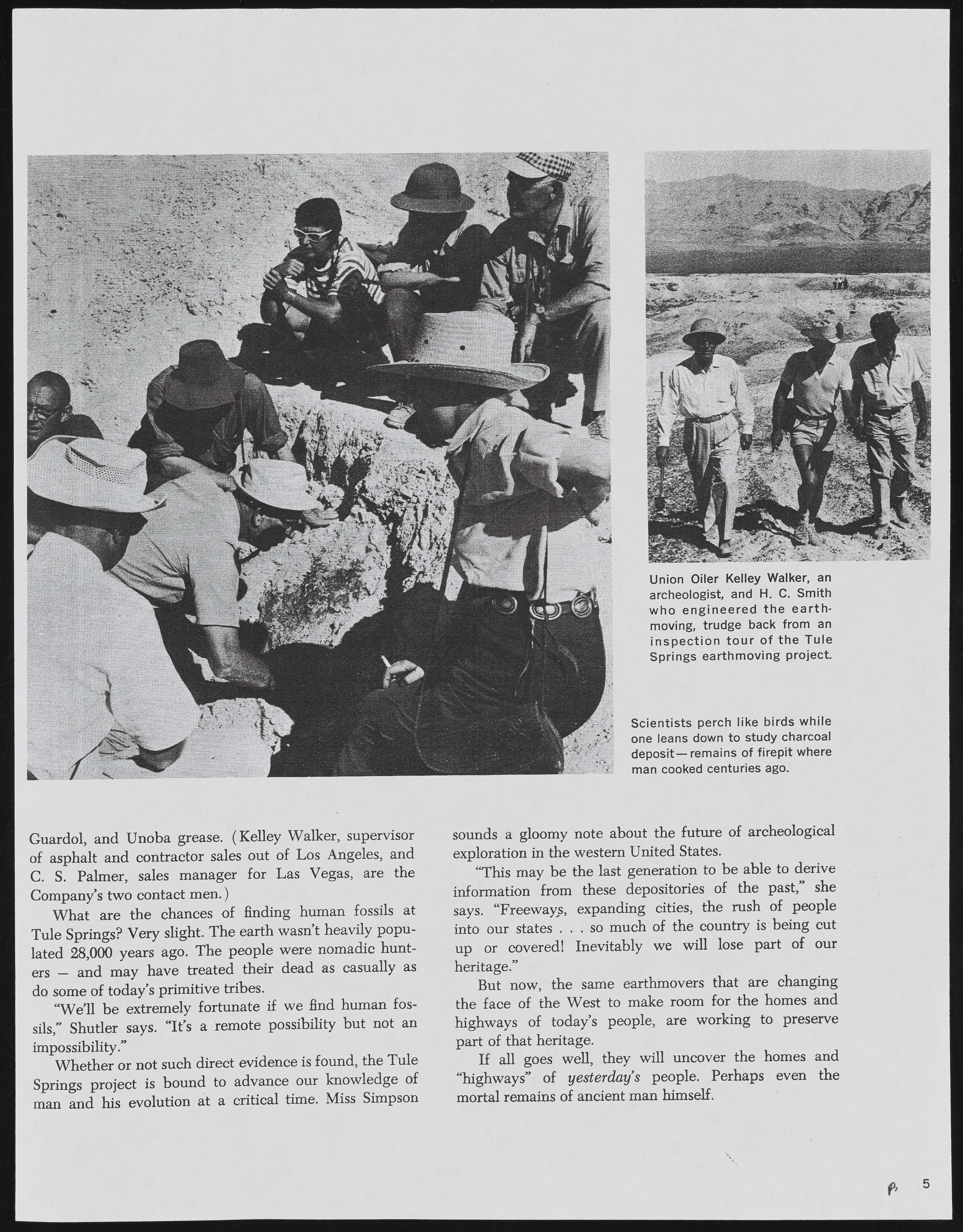Copyright & Fair-use Agreement
UNLV Special Collections provides copies of materials to facilitate private study, scholarship, or research. Material not in the public domain may be used according to fair use of copyrighted materials as defined by copyright law. Please cite us.
Please note that UNLV may not own the copyright to these materials and cannot provide permission to publish or distribute materials when UNLV is not the copyright holder. The user is solely responsible for determining the copyright status of materials and obtaining permission to use material from the copyright holder and for determining whether any permissions relating to any other rights are necessary for the intended use, and for obtaining all required permissions beyond that allowed by fair use.
Read more about our reproduction and use policy.
I agree.Information
Digital ID
Permalink
Details
More Info
Rights
Digital Provenance
Publisher
Transcription
Union Oiler Kelley Walker, an archeologist, and H. C. Smith who engineered the earth-moving, trudge back from an inspection tour of the Tule Springs earthmoving project. Scientists perch like birds while one leans down to study charcoal deposit— remains of firepit where man cooked centuries ago. Guardol, and Unoba grease. ( Kelley Walker, supervisor of asphalt and contractor sales out of Los Angeles, and C. S. Palmer, sales manager for Las Vegas, are the Company’s two contact m en.) What are the chances of finding human fossils at Tule Springs? Very slight. The earth wasn’t heavily populated 28,000 years ago. The people were nomadic hunt- 0j*§ _ and may have treated their dead as casually as do some of today’s primitive tribes. “W e’ll be extremely fortunate if we find human fossils,” Shutler says. “It’s a remote possibility but not an impossibility.” Whether or not such direct evidence is found, the Tule Springs project is bound to advance our knowledge of man and his evolution at a critical time. Miss Simpson sounds a gloomy note about the future of archeological exploration in the western United States. “This may be the last generation to be able to derive information from these depositories of the past,” she says. “Freeways, expanding cities, the rush of people into our states . . .s o much of the country is being cut up or covered! Inevitably we will lose part of our heritage.” But now, the same earthmovers that are changing the face of the West to make room for the homes and highways of today’s people, are working to preserve part of that heritage. If all goes well, they will uncover the homes and “highways” of yesterdays people. Perhaps even the mortal remains of ancient man himself. 5

